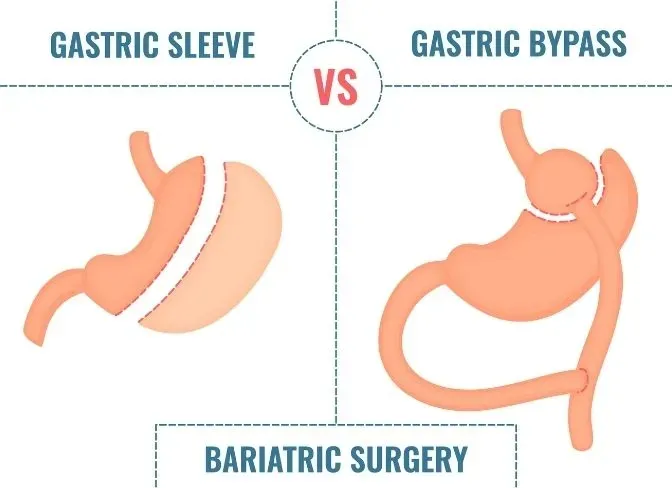What is obesity?
Obesity is a multifaceted health condition characterized by an excess accumulation of body fat, often resulting in various health complications. While body fat itself isn’t inherently pathological, an excessive amount can disrupt normal bodily functions, leading to detrimental health effects over time.
Fortunately, managing obesity can mitigate associated health risks. Even modest reductions in weight can significantly enhance overall health outcomes. However, effective weight loss strategies vary from individual to individual, as what works for one person may not yield the same results for another. It’s important to recognize that weight loss is often a journey marked by attempts and setbacks, emphasizing the significance of sustaining weight loss achievements over the long term.
Is obesity solely determined by your weight?
Healthcare providers commonly rely on the Body Mass Index (BMI) as a tool to define obesity within the general population. BMI calculates body weight relative to height, with a BMI of 30 or higher typically indicating obesity. While BMI serves as a convenient metric for assessing weight-related health risks, it does have limitations.
For instance, individuals with high muscle mass, such as bodybuilders or athletes, may register elevated BMI scores despite having low body fat levels. Conversely, it’s possible to exhibit obesity-related health risks even with a „normal“ BMI if body fat percentage is high. Moreover, healthcare providers recognize variations in obesity risk across different ethnicities, with some groups, like those of Asian descent, potentially facing health risks at lower BMIs, while others, like Black individuals, may experience risks at higher BMIs.
An alternative method for gauging obesity is through waist circumference measurements. Excess fat around the waist correlates strongly with obesity-related diseases. Healthcare providers typically consider waist sizes exceeding 35 inches for individuals assigned female at birth or 40 inches for individuals assigned male at birth as significant indicators of increased health risks associated with obesity.
What are the three categories of obesity?
Healthcare providers categorize obesity into three classes based on its severity, utilizing the Body Mass Index (BMI) as a measurement tool. Here are the classifications:
- Class I obesity: BMI ranging from 30 to less than 35 kg/m².
- Class II obesity: BMI ranging from 35 to less than 40 kg/m².
- Class III obesity: BMI of 40 kg/m² or higher.
What is „morbid“ obesity?
The term „morbid obesity“ was previously used to describe class III obesity. In medical terminology, „morbidity“ refers to associated health risks. Physicians used the term „morbid“ to signify that class III obesity was highly correlated with various health issues. However, healthcare professionals have phased out the term due to its negative implications and now prefer to simply refer to it as class III obesity.
How is childhood obesity evaluated?
Healthcare providers assess childhood obesity using the Body Mass Index (BMI), but with adjustments based on the child’s age and assigned sex. Children over the age of 2 are typically diagnosed with obesity if their BMI exceeds that of 95% of peers within the same age and sex group. It’s important to note that various growth charts may slightly differ in presenting BMI averages, reflecting the specific population being sampled.
How widespread is obesity?
In American adults, the prevalence of obesity was last surveyed in 2017-2018, revealing a rate of 42.5%, a significant increase from 30.5% recorded in 1999-2000. Notably, during the same period, the prevalence of class III obesity nearly doubled from 4.7% to 9.2%. Concerning childhood obesity in the United States, the rate stood at 19.3% during 2017-2018.
On a global scale, obesity has surged nearly threefold over the past five decades. This increase has been particularly pronounced in lower-income countries where malnutrition has traditionally been prevalent. These communities now face the dual burden of obesity alongside undernutrition, driven in part by greater access to energy-dense, nutritionally poor foods.
What is the outlook for individuals with obesity?
While obesity does elevate your risk for certain health conditions, it’s important to understand that having obesity doesn’t mean you’re currently experiencing those conditions, nor does it imply that they’re inevitable. The associated risks are indeed concerning, but they are also modifiable and manageable. Your healthcare provider will likely recommend weight loss as a means to mitigate these risks, acknowledging that it may present challenges but emphasizing that it’s achievable.
Even modest weight loss, ranging from 5% to 10%, can yield significant improvements in health outcomes. It has the potential to halt or slow the progression of conditions such as fatty liver disease, metabolic syndrome, and diabetes. With proper medical guidance and support, achieving and sustaining this level of weight loss is feasible, and perhaps even greater reductions may be attainable. Adhering to a comprehensive and long-term treatment plan is crucial for maintaining weight loss and promoting overall health and well-being.





Get Free Quote